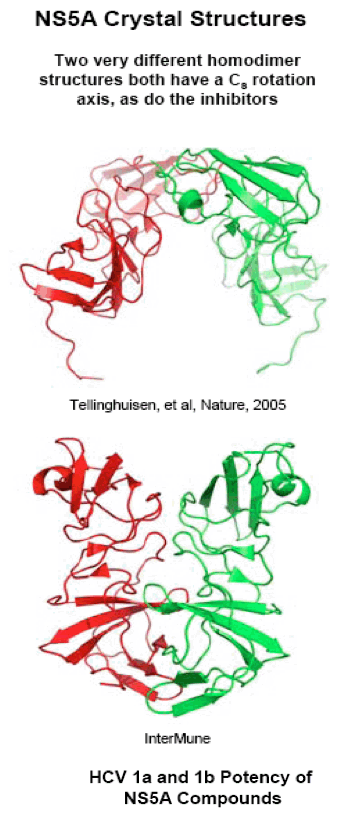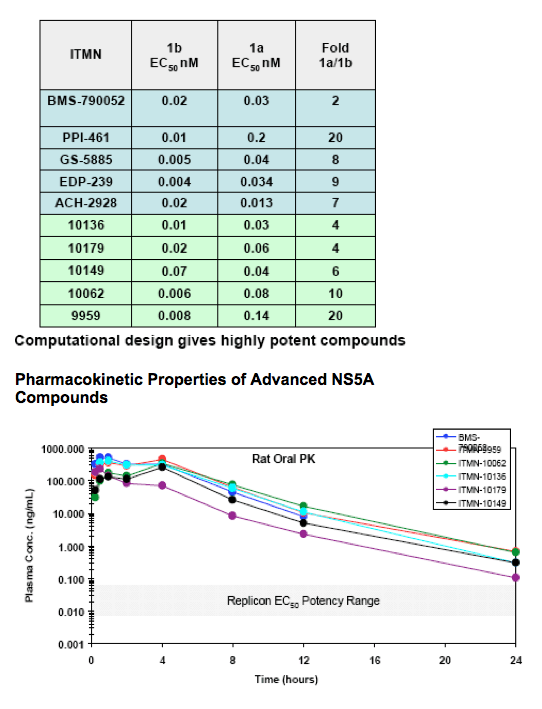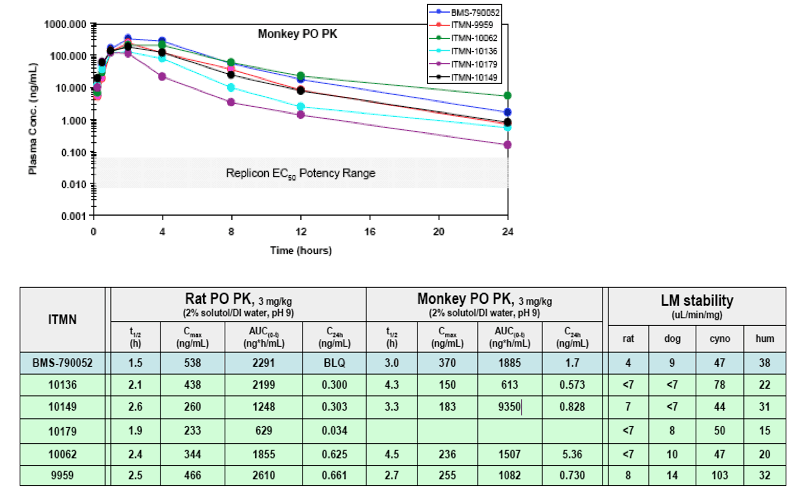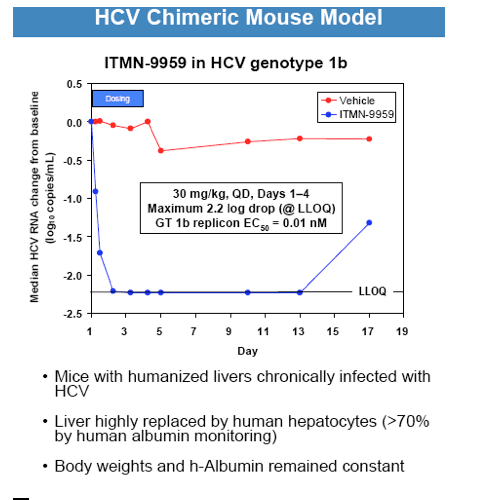 |
 |
 |
| |
CHARACTERIZATION OF NOVEL, HIGHLY POTENT NS5A INHIBITORS WITH QD DOSING POTENTIAL AND ROBUST ACTIVITY IN AN HCV CHIMERIC ANIMAL MODEL Intermune
|
| |
| |
Reported by Jules Levin EASL 2011 March 31-Apr 2 Berlin Germany
J. B. Nicholas, B. Buckman, V. Serebryany, C. J. Schaefer, K. Kossen, D. Ruhrmund, L. Hooi, N. Aleskovski, A. Arfsten, S. R. Lim, L. Pan, L. Huang, R. Rajagopalan, S. Misialek, H. Ramesha, and S. Seiwert
InterMune, Inc., Brisbane, CA, USA

ABSTRACT
Background: Direct acting antiviral agents (DAA) have shown significant antiviral activity in clinical studies. A goal in the development of next generation therapeutic regimens is the identification of DAA combinations that can be used in the absence of interferon. NS5A has emerged as a promising target for antiviral drug development. Several compounds that are purported to target NS5A have entered clinical trials and are possible components of DAA combinations. Here we present the pharmacokinetic characterization of novel, potent NS5A inhibitors with strong potential for QD dosing and use in DAA
combinations.
Materials and methods: We used a computational approach and NS5A crystal structures to design lead analogs. Compounds targeting NS5A were characterized in stable 1a and 1b replicon systems in the presence or absence of 40% human serum. We also assessed potency against replicons bearing
known NS5A resistance substitutions. The pharmacokinetics of lead compounds was evaluated in rats. Mice with humanized livers chronically infected with HCV were used to characterize antiviral activity.
Results: A structure-based drug design approach led to the identification of NS5A-targeted compounds with picomolar potency against genotype 1a and 1b replicons. Replicon potency for these compounds was relatively unaffected by the addition of 40% human serum. Known NS5A resistance substitutions
affected replicon potency, suggesting that the compounds bind in the vicinity of these amino acids. The pharmacokinetics of several compounds in the series showed the potential for QD dosing. The antiviral activity of select compounds was evaluated in chimeric mice chronically infected with HCV. Following
the first of seven once-daily 30 mg/kg doses, viral load was driven below the limit of quantification in a rapid, single-phase decline, and remained below the level of quantification for the duration of the study.
Conclusions: We have designed NS5A targeted compounds with low picomolar activity in genotype 1a and 1b replicons and favorable pharmacokinetics in preclinical species. Evaluation of select NS5A compounds in mice with a chimeric human liver showed rapid and sustained suppression of viral load.
Background
· Molecules that target HCV protease (NS3/4A) and polymerase (NS5B) are currently under development and in clinical trials
· The ability of any of these drugs to achieve sustained viral reduction (SVR) without interferon is not known
· Multiple direct acting antiviral agents are likely required to achieve SVR, and several combination therapies are in the clinic
· Mechanisms distinct from inhibition of protease and polymerase activity are likely required or desired
· NS5A has emerged as an important HCV target
· Validity of NS5A target was demonstrated by BMS-790052
· InterMune is currently developing inhibitors of NS5A that have excellent potency and PK, and demonstrate the potential for QD human dosing





|
| |
|
 |
 |
|
|